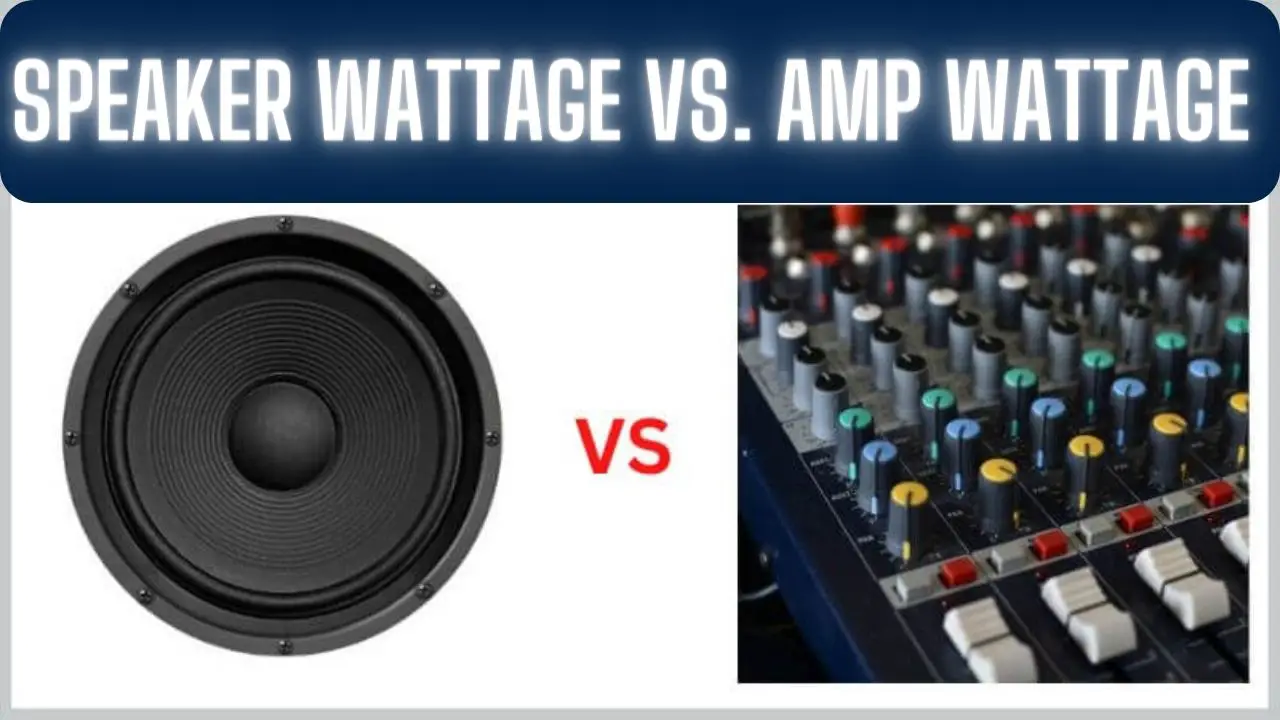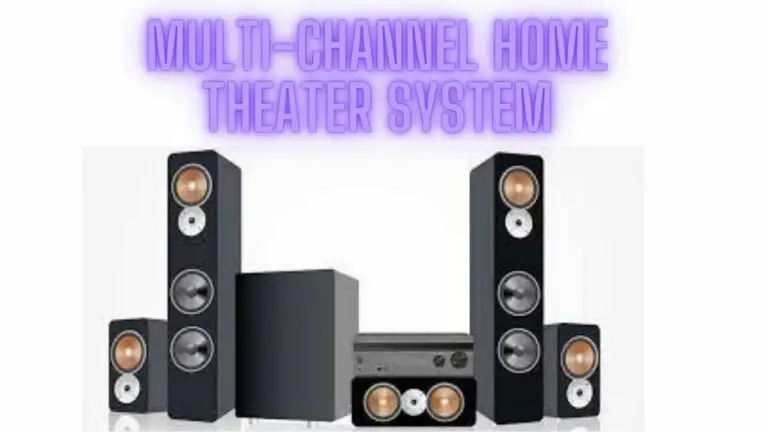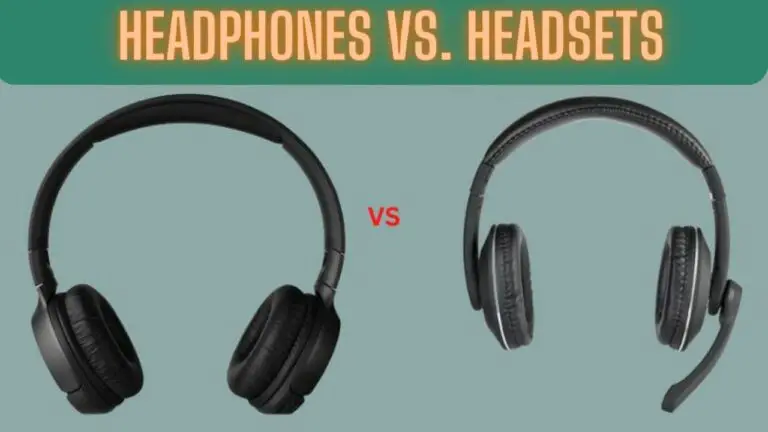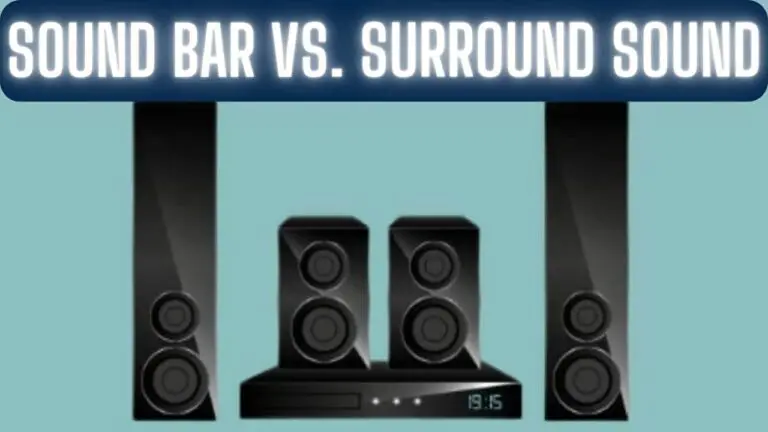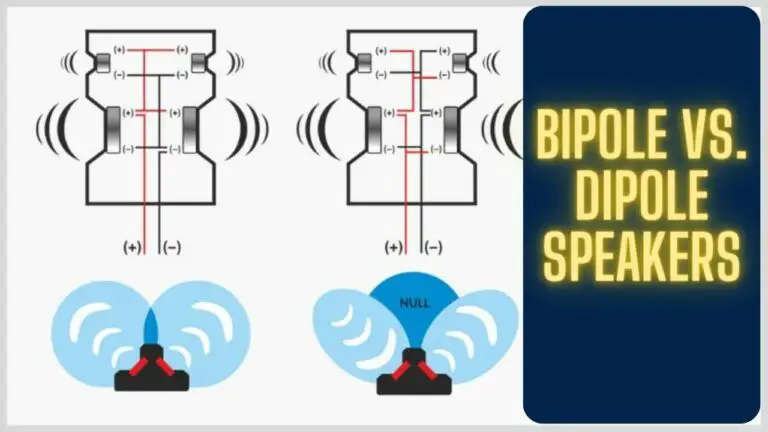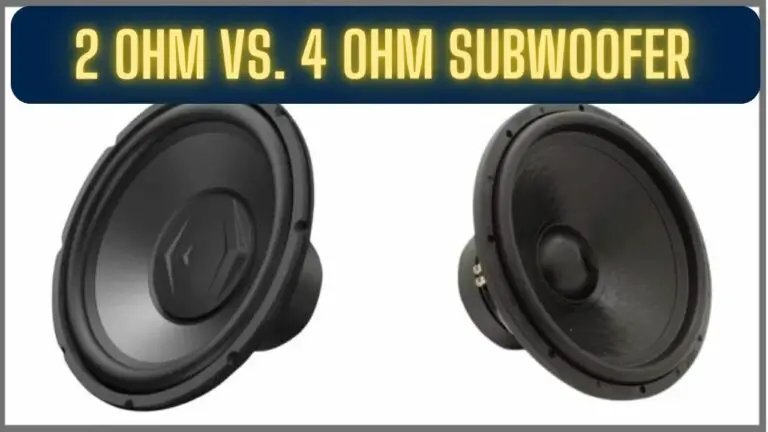Speaker Wattage vs. Amp Wattage: Matching Power for Quality Sound
Introduction
In the realm of audio systems, understanding the relationship between Speaker Wattage and Amplifier Wattage is crucial for achieving optimal performance and preventing potential damage to equipment. Speaker wattage refers to the power handling capacity of speakers, while amplifier wattage denotes the power output capability of amplifiers. This comparison delves into the intricacies of speaker and amplifier wattage, exploring their definitions, implications for performance, and the importance of matching them appropriately. By elucidating these concepts, we aim to provide clarity on how speaker and amplifier wattage interact and contribute to the overall audio experience.
Speaker Wattage
Speaker wattage refers to the power handling capacity of a speaker, indicating the maximum amount of electrical power it can effectively convert into sound without sustaining damage. Understanding speaker wattage is essential for ensuring compatibility with amplifiers and avoiding underpowering or overpowering scenarios that can compromise sound quality and potentially damage the speakers.
- Definition and Measurement:
- Speaker wattage is typically expressed in terms of “watts RMS” (Root Mean Square), which represents the continuous power handling capability of the speaker.
- Watts RMS denotes the amount of power a speaker can handle over an extended period without overheating or sustaining damage, providing a reliable measure of its performance under normal operating conditions.
- Peak power handling, another specification often provided by manufacturers, represents the maximum instantaneous power a speaker can tolerate for short durations, such as during dynamic peaks in audio signals.
- Implications for Speaker Performance:
- Higher wattage speakers generally have greater power handling capacities, allowing them to handle higher amplifier power outputs and produce louder sound levels without distortion or damage.
- Speakers with higher wattage ratings are suitable for larger venues, higher volume levels, and applications requiring greater sound pressure levels (SPL), such as live concerts, clubs, and outdoor events.
- Properly matching speaker wattage to amplifier wattage helps ensure optimal performance, efficiency, and reliability, allowing the speaker to reproduce audio signals accurately and efficiently across a wide range of frequencies and volumes.
- Factors Influencing Speaker Wattage:
- Speaker Sensitivity: Speaker sensitivity, measured in decibels (dB) at 1 watt/1 meter, indicates how efficiently a speaker converts electrical power into sound output. Higher sensitivity speakers require less power to achieve a given volume level and are generally more suitable for low-power amplifiers.
- Speaker Impedance: Speaker impedance, measured in ohms (Ω), represents the electrical resistance encountered by the amplifier when driving the speaker. Speakers with lower impedance ratings (e.g., 4 ohms) draw more current from the amplifier and may require amplifiers capable of delivering higher power outputs to achieve optimal performance.
Understanding speaker wattage is essential for selecting speakers that match the power output capabilities of amplifiers and meeting the requirements of specific audio applications, whether for home audio, professional audio production, or live sound reinforcement. Properly matched speaker and amplifier wattage contribute to optimal sound quality, reliability, and longevity of audio systems.
Amplifier Wattage
Amplifier wattage refers to the power output capability of an amplifier, indicating the maximum amount of electrical power it can deliver to speakers or other audio devices. Understanding amplifier wattage is crucial for selecting amplifiers that can adequately drive speakers, ensuring optimal performance and preventing underpowering or overpowering scenarios that may affect sound quality and equipment safety.
- Definition and Measurement:
- Amplifier wattage is typically expressed in terms of “watts RMS” (Root Mean Square), which represents the continuous power output capability of the amplifier when operating under normal conditions.
- Watts RMS denotes the amount of power an amplifier can deliver to speakers without distortion or clipping, providing a reliable measure of its performance across various load impedances and frequency ranges.
- Peak power output, another specification often provided by manufacturers, represents the maximum instantaneous power an amplifier can deliver for short durations, such as during transient peaks in audio signals.
- Implications for Amplifier Performance:
- Higher wattage amplifiers generally provide greater power output capabilities, allowing them to drive speakers with higher power handling capacities and produce louder sound levels with clarity and fidelity.
- Amplifiers with higher wattage ratings are suitable for powering speakers in larger venues, achieving higher volume levels, and maintaining adequate headroom for dynamic audio content.
- Properly matching amplifier wattage to speaker wattage helps ensure optimal performance, efficiency, and reliability, allowing the amplifier to deliver sufficient power to drive the speakers and reproduce audio signals accurately across the entire frequency spectrum.
- Factors Influencing Amplifier Wattage:
- Amplifier Class: Different amplifier classes, such as Class A, Class AB, Class D, and Class H, have varying efficiency and power output characteristics, affecting their wattage ratings and performance.
- Dynamic Headroom: Amplifiers with ample dynamic headroom can accommodate transient peaks in audio signals without distortion or clipping, providing a margin of safety and preventing audible compression during loud passages or dynamic peaks.
- Load Impedance: Amplifier wattage may vary depending on the impedance of the speakers connected to it, with higher impedance speakers requiring less power to achieve a given volume level compared to lower impedance speakers.
Understanding amplifier wattage is essential for selecting amplifiers that match the power handling capacities of speakers and meet the requirements of specific audio applications, whether for home audio, professional audio production, or live sound reinforcement. Properly matched amplifier and speaker wattage contribute to optimal sound quality, reliability, and longevity of audio systems.
Matching Speaker and Amplifier Wattage
Matching speaker and amplifier wattage is essential for achieving optimal performance, efficiency, and reliability in audio systems. Proper power matching ensures that speakers receive adequate power from amplifiers to reproduce audio signals accurately without distortion or damage. Here are considerations for matching speaker and amplifier wattage effectively:
- Speaker Power Handling:
- Refer to the manufacturer’s specifications to determine the power handling capacity of the speakers, typically expressed in terms of RMS wattage.
- Choose amplifiers with power outputs that fall within the recommended power handling range of the speakers to ensure compatibility and prevent underpowering or overpowering.
- Amplifier Power Output:
- Consider the power output capability of the amplifier, which should ideally match or slightly exceed the power handling capacity of the speakers.
- Select amplifiers with wattage ratings that provide sufficient headroom for dynamic peaks in audio signals while avoiding excessive power that may risk overpowering the speakers.
- Impedance Matching:
- Ensure that the amplifier’s output impedance matches the impedance rating of the speakers for optimal power transfer and efficiency.
- Avoid mismatching impedance, as it can result in reduced power output, inefficient power transfer, and potential damage to the amplifier or speakers.
- Sensitivity Matching:
- Consider the sensitivity rating of the speakers, which indicates how efficiently they convert electrical power into sound output.
- Choose amplifiers with adequate power outputs to achieve desired volume levels with the given speaker sensitivity, ensuring efficient power utilization and minimizing the risk of distortion.
- Consider Room Size and Acoustics:
- Take into account the size of the listening environment, as larger rooms may require more powerful amplifiers to achieve sufficient volume levels and coverage.
- Consider the acoustic characteristics of the room, such as reflective surfaces, absorption materials, and room resonances, which can affect perceived loudness and sound quality.
- Test and Evaluate:
- Conduct tests and evaluations to assess the performance of the matched speaker and amplifier combination in real-world listening conditions.
- Listen for signs of distortion, clipping, or strain in the audio playback, and adjust the amplifier’s volume levels and settings as needed to optimize sound quality and performance.
By carefully matching speaker and amplifier wattage, audio enthusiasts, professionals, and consumers can ensure that their audio systems deliver optimal performance, fidelity, and reliability across various applications and listening environments. Proper power matching enhances the overall listening experience, allowing speakers to reproduce audio signals accurately and efficiently while maximizing the lifespan of the equipment.
Real-World Applications
Matching speaker and amplifier wattage appropriately is crucial for achieving optimal audio performance in various real-world applications across different environments and usage scenarios. Here are some examples of real-world applications where proper power matching is essential:
- Home Audio Systems:
- In home audio setups, matching speaker and amplifier wattage ensures balanced sound reproduction and optimal performance for listening to music, watching movies, and gaming.
- Proper power matching helps create an immersive listening experience, with speakers delivering clear and dynamic sound at appropriate volume levels without distortion or strain.
- Professional Audio Production:
- In recording studios, mastering suites, and broadcast facilities, accurate power matching between studio monitors and amplifiers is critical for monitoring audio signals with precision and fidelity.
- Professional-grade amplifiers and studio monitors should be carefully matched to maintain transparency, accuracy, and consistency in audio playback during recording, mixing, and mastering sessions.
- Live Sound Reinforcement:
- In live music venues, theaters, and outdoor events, matching amplifier power to speaker power handling ensures reliable and robust sound reinforcement for performers and audiences.
- Proper power matching helps optimize sound coverage, intelligibility, and dynamic range, allowing sound engineers to achieve desired volume levels and sonic clarity without risking equipment damage or distortion.
- Public Address (PA) Systems:
- In commercial installations, public address systems require amplifiers and speakers that can deliver adequate power output for broadcasting announcements, music playback, and emergency notifications.
- Proper power matching ensures effective communication and sound reinforcement in venues such as airports, stadiums, shopping malls, and corporate facilities, where clear and intelligible audio is essential.
- Automotive Audio Systems:
- In car audio systems, matching amplifier power to speaker power handling helps achieve balanced sound reproduction and optimal performance within the confines of the vehicle’s interior.
- Proper power matching ensures that car speakers can reproduce music with clarity, detail, and impact, enhancing the listening experience for drivers and passengers during daily commutes or road trips.
- Portable Audio Solutions:
- In portable audio setups such as outdoor parties, picnics, or camping trips, matching amplifier power to speaker power handling is essential for achieving sufficient volume levels and sound coverage.
- Battery-powered amplifiers and portable speakers should be paired appropriately to ensure reliable and enjoyable audio playback in outdoor environments where power sources may be limited.
In summary, proper power matching between speakers and amplifiers is essential across various real-world applications, from home audio systems and professional audio production to live sound reinforcement, public address systems, automotive audio, and portable audio solutions. By ensuring that speakers receive adequate power from amplifiers, users can enjoy optimal sound quality, performance, and reliability in diverse listening environments and usage scenarios.
Performance vs. Power
In the realm of audio systems, the relationship between performance and power is a critical consideration when selecting speakers and amplifiers. While power (wattage) plays a significant role in driving speakers and achieving desired volume levels, performance encompasses a broader spectrum of factors that influence sound quality, clarity, and overall listening experience. Understanding the balance between performance and power is essential for optimizing audio systems and achieving optimal results. Here’s a breakdown of the relationship between performance and power:
- Power:
- Power, typically measured in watts, represents the electrical energy delivered by amplifiers to speakers. Higher amplifier wattage can drive speakers to produce louder sound levels and accommodate dynamic peaks in audio signals.
- Power is essential for achieving sufficient volume levels in large venues, outdoor events, and applications requiring high sound pressure levels (SPL). Adequate power ensures that speakers can deliver audio with clarity and impact, even in challenging acoustic environments.
- However, excessive power without proper control or matching can lead to distortion, clipping, and potential damage to speakers. Overpowering speakers may cause cone damage, voice coil overheating, or amplifier instability, compromising sound quality and equipment longevity.
- Performance:
- Performance encompasses a wide range of factors beyond sheer volume, including sound quality, fidelity, clarity, imaging, dynamics, and frequency response. It reflects the ability of audio systems to accurately reproduce audio signals with realism and precision.
- High-performance audio systems prioritize factors such as speaker design, amplifier topology, signal processing, and room acoustics to achieve optimal sound reproduction across the entire frequency spectrum.
- Performance-oriented audio components focus on minimizing distortion, noise, resonance, and coloration while maximizing transparency, resolution, detail retrieval, and dynamic range. They prioritize sonic accuracy and realism, delivering a lifelike listening experience that captures the nuances and subtleties of recorded music or soundtracks.
- Balance:
- Achieving the right balance between power and performance is key to optimizing audio systems for various applications and listening environments. While sufficient power is necessary for adequate volume levels and dynamic range, performance-oriented design ensures that audio reproduction is faithful to the original source material.
- High-performance audio systems may achieve impressive sound quality and clarity at lower wattage levels, thanks to efficient amplifier designs, sensitive speakers, and optimized acoustic treatments. They prioritize quality over sheer quantity, delivering immersive and engaging audio experiences without excessive power requirements.
- Proper power matching between amplifiers and speakers is essential for maintaining the balance between power and performance. Matching wattage ratings to speaker power handling ensures that speakers receive adequate power without overpowering or underpowering them, maximizing sound quality and system reliability.
In summary, while power is crucial for driving speakers and achieving desired volume levels, performance encompasses a broader range of factors that influence sound quality, fidelity, and overall listening experience. Balancing power with performance involves selecting audio components that deliver optimal sound reproduction while ensuring adequate power output for the intended application. By prioritizing performance-oriented design and proper power matching, audio enthusiasts can create immersive and engaging listening environments that capture the essence of recorded music or sound content with realism and precision.
Misconceptions and Myths
In the realm of audio systems, several misconceptions and myths persist regarding speaker wattage, amplifier power, and their impact on sound quality and performance. Understanding and dispelling these misconceptions is essential for making informed decisions when selecting and configuring audio equipment. Here are some common misconceptions and myths:
- “More Wattage is Always Better”:
- Myth: Many believe that higher amplifier wattage automatically translates to better sound quality and louder volume levels.
- Reality: While higher wattage amplifiers can provide greater headroom and dynamic range, excessive power may be unnecessary for typical listening environments and can potentially overpower speakers.
- Truth: It’s more important to match amplifier wattage to speaker power handling capabilities and consider factors such as sensitivity, room size, and listening preferences to achieve optimal sound quality and volume levels.
- “Speakers Can Handle Any Amount of Power”:
- Myth: Some believe that speakers are impervious to damage from excessive amplifier power and can handle any amount of wattage without consequence.
- Reality: Speakers have specific power handling capacities, and exceeding these limits can lead to distortion, overheating, and potential damage to speaker components such as voice coils and cones.
- Truth: Proper power matching between amplifiers and speakers is crucial to prevent underpowering or overpowering, ensuring optimal performance, longevity, and reliability of audio systems.
- “Amplifier Wattage Determines Sound Quality”:
- Myth: There’s a common misconception that amplifier wattage directly correlates with sound quality, with higher wattage amplifiers presumed to deliver superior audio fidelity.
- Reality: Sound quality is influenced by various factors beyond amplifier wattage, including amplifier design, topology, components, signal processing, and speaker characteristics.
- Truth: While amplifiers with sufficient power output are essential for driving speakers and achieving desired volume levels, factors such as distortion, noise, damping factor, and frequency response have a more significant impact on sound quality and transparency.
- “Lower Wattage Amplifiers Are Always Insufficient”:
- Myth: Some believe that lower wattage amplifiers are inadequate for driving speakers, especially in large rooms or venues, and assume that higher wattage is always necessary for satisfactory performance.
- Reality: Lower wattage amplifiers can provide excellent sound quality and sufficient volume levels in many scenarios, particularly with sensitive speakers and efficient amplifier designs.
- Truth: Proper power matching, speaker sensitivity, and room acoustics play crucial roles in determining the adequacy of amplifier wattage for specific applications. In some cases, lower wattage amplifiers may offer better performance and efficiency without sacrificing sound quality.
- “All Amplifiers of the Same Wattage Sound Identical”:
- Myth: There’s a misconception that amplifiers with the same wattage rating sound identical regardless of brand, design, or technology.
- Reality: Amplifiers vary significantly in terms of design, topology, components, and sonic characteristics, even when they have similar power output specifications.
- Truth: Factors such as amplifier class (e.g., Class A, Class AB, Class D), topology (e.g., solid-state, tube), damping factor, distortion levels, and frequency response contribute to sonic differences between amplifiers, irrespective of their wattage ratings.
Dispelling these misconceptions and myths helps consumers make more informed decisions when selecting and configuring audio systems, ensuring optimal sound quality, performance, and satisfaction. By understanding the nuances of speaker wattage, amplifier power, and their impact on audio reproduction, enthusiasts can create immersive and enjoyable listening experiences tailored to their preferences and requirements.
Speaker Wattage vs. Amp Wattage FAQS
What happens if I connect a speaker to an amplifier with a higher wattage rating than the speaker’s power handling capacity?
Connecting a speaker to an amplifier with a higher wattage rating can potentially damage the speaker. The excess power from the amplifier may cause the speaker’s voice coil to overheat and the speaker cone to become damaged. It’s generally advisable to match the amp’s wattage output to or slightly exceed the speaker’s power handling capacity to avoid such issues.
Can I connect a speaker with a lower wattage rating to an amplifier with a higher wattage output safely?
Yes, you can connect a speaker with a lower wattage rating to an amplifier with a higher wattage output safely, provided that you use the amplifier at reasonable volume levels. In this case, the speaker will not receive more power than it can handle unless you push the amplifier to its maximum output, which could potentially damage the speaker.
Is it better to have an amplifier with higher wattage for better sound quality?
Not necessarily. The quality of sound depends on various factors, including the quality of the amplifier, the source material, the speakers, and the acoustics of the room. Having an amplifier with significantly higher wattage than what your speakers require does not inherently improve sound quality. It’s more important to have a well-matched system with components that complement each other.
What should I do if I have an amplifier with higher wattage than my speakers?
If you have an amplifier with higher wattage than your speakers, you can use the system safely by ensuring that you do not push the amplifier to its maximum output levels. Keep the volume at reasonable levels to prevent overpowering the speakers and causing damage. Additionally, consider upgrading your speakers to ones that can handle the amplifier’s output if you want to fully utilize its power.
Is speaker sensitivity related to wattage handling capacity?
Speaker sensitivity and wattage handling capacity are related but distinct specifications. Speaker sensitivity measures how efficiently a speaker converts electrical power into sound (measured in decibels or dB). While it affects how loud a speaker can get with a given amount of power, it is not the same as the speaker’s wattage handling capacity, which indicates the maximum power it can handle without damage.
Can I use a lower-wattage amplifier with high-sensitivity speakers to achieve high volume levels?
Yes, you can use a lower-wattage amplifier with high-sensitivity speakers to achieve high volume levels. High-sensitivity speakers are efficient at converting power into sound, so they can produce louder volumes with less power. This combination can result in a loud and clear sound even with a lower-wattage amplifier.
Conclusion
In conclusion, matching speaker wattage to amp wattage is essential for ensuring the longevity and optimal performance of your audio system. By understanding the power requirements of your speakers and selecting an appropriate amplifier, you can enjoy high-quality audio without risking equipment damage or poor sound quality.

